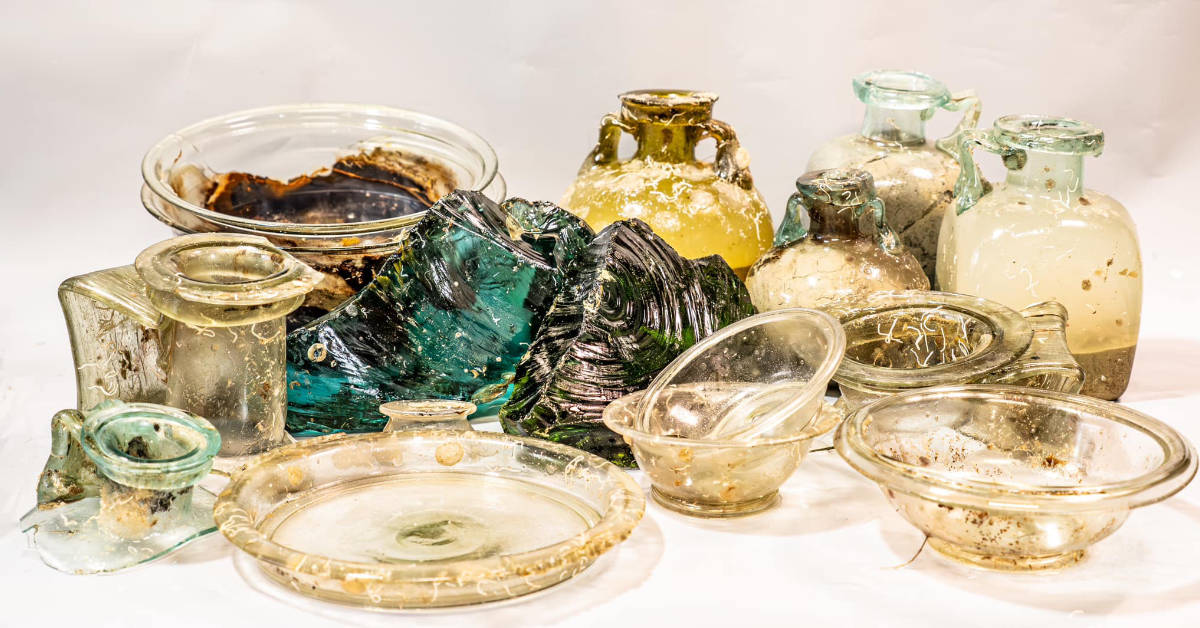An archaeological mission to recover a shipment of glass dating from the late XNUMXst or early XNUMXnd century AD. This is what happened in the stretch of the Tyrrhenian Sea between Corsica and the island of Capraia in the first week of July. This is the second known case in the Mediterranean of a sinking of a ship Romanian containing a cargo of glass, both raw and processed.
The bilateral mission, coordinated by the Italian and French Ministries of Culture, made it possible to bring to the surface a part of the glass load, buried at 350 meters of depth in Italian territorial waters.
The Role of ROVs for Glass Cargo Survey and Recovery
The discovery of the Capo Corso 2 wreck, which took place in 2012, was favored by the use of remotely controlled submarine vehicles. For conducting underwater exploration and the object recovery the Département des Recherches Archéologiques subaquatiques et sous-marine-Drassm has made available the flagship research vessel (Alfred Merlin), equipped with the two ROVs (remotely operated vehicles) Arthur and Hilarion. These robots allow you to shoot high-definition video at incredible depths, as well as ventilate and vacuum the sediment, and recover the objects.
Towards a 360° research campaign
The shape of the amphorae recovered from the wreck reveals their origin. It is in fact highly probable that the ship, with its cargo of glass, came from the Middle East (Lebanon or Syria) and was headed for Provence. And it is estimated that she carried several tons of such material, including raw glass blocks and manufactured goods of blown glass of different sizes (bottles, plates, cups, an ointment).
A thorough analysis of the recovered exhibits, in near-perfect condition, will provide further details about the chronology of the sinking and the route taken by the cargo of glass. And it will allow for a more precise history of trade in the Mediterranean. For this reason, the Italian and French researchers hope to start a multidisciplinary project aimed at enhancing an incredible discovery and an extremely exciting investigative campaign, to be relived through the wonderful and fascinating images contained in the following video.
Sources: patrimoniosubacqueo.it, ilpost.it
Image credits: Manuel Añò, Facebook page of the National Superintendency for Underwater Cultural Heritage



